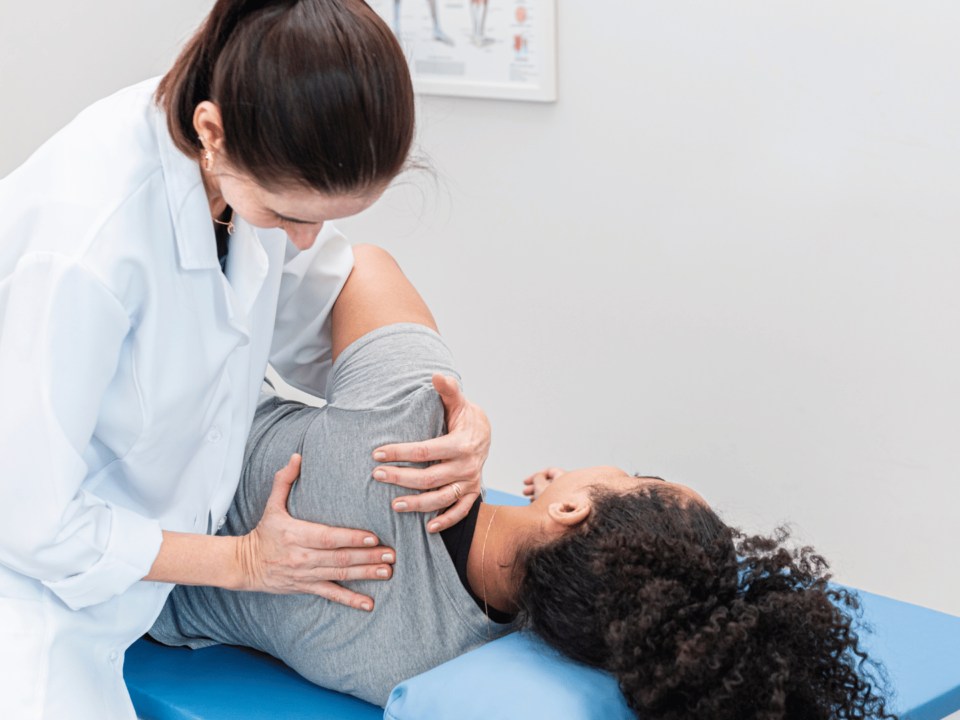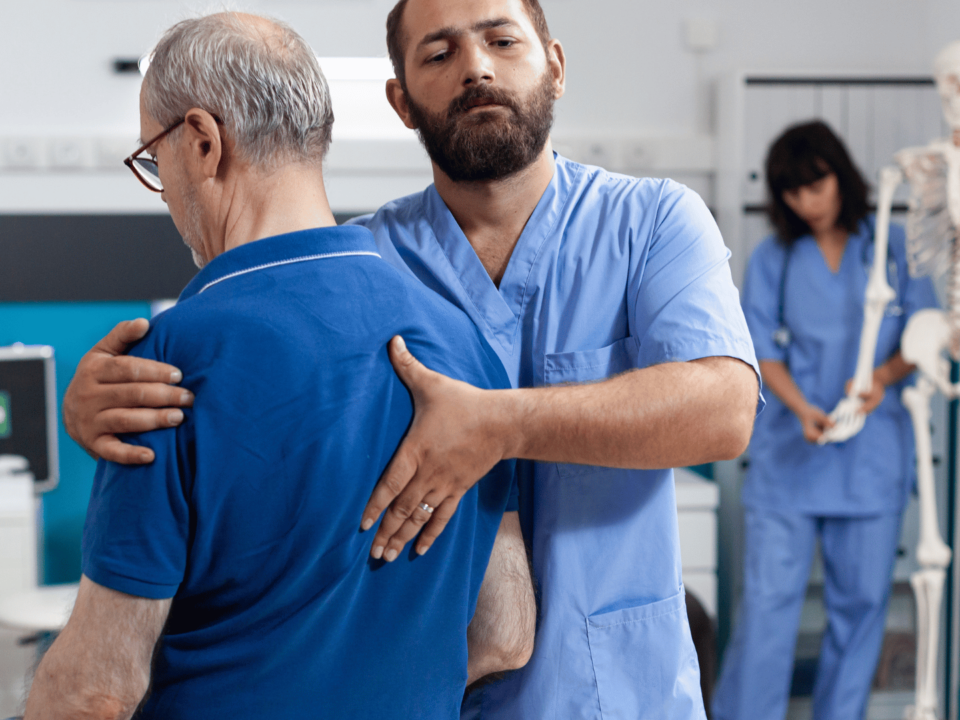
Finding a Sports Medicine Physician Near Me: A Comprehensive Guide
June 29, 2023
Managing Radiating Pain: Discover 5 Tips for Relief
July 26, 2023Hip and knee pain can be incredibly debilitating, making even the simplest tasks feel like a Herculean effort. Whether you’re an athlete experiencing overuse injuries or a sedentary individual with wear and tear on your joints, understanding the causes and treatments for hip and knee pain is crucial for finding relief and improving your quality of life. In this article, we will explore the common culprits of hip and knee pain, delve into various treatment options, and provide insights into managing and preventing these conditions.
Identifying the Culprit of Hip and Knee Pain
When it comes to hip and knee pain, accurately identifying the underlying cause is the first step towards finding effective treatment. Most often, joint pain stems from musculoskeletal issues, such as muscle strains, ligament tears, or inflammation of the tendons. Additionally, conditions like osteoarthritis and rheumatoid arthritis can cause pain and stiffness in the hips and knees. It’s essential to consult with a healthcare professional to determine the specific cause of your pain, as they may recommend diagnostic tests to get a comprehensive understanding of your condition.
Let’s explore some of the common causes of hip and knee pain in more detail. Muscle strains, for example, can occur due to overexertion or sudden movements that put excessive stress on the muscles surrounding the hip and knee joints. These strains can cause pain, tenderness, and limited range of motion. In some cases, the strained muscles may even develop small tears, leading to further discomfort.
Ligament tears are another common culprit of hip and knee pain. Ligaments are strong bands of tissue that connect bones and provide stability to the joints. However, excessive force or twisting motions can cause these ligaments to tear, resulting in pain, swelling, and instability. Ligament tears are often seen in athletes who participate in high-impact sports or activities that require sudden changes in direction.
Inflammation of the tendons, known as tendinitis, is also a frequent cause of hip and knee pain. Tendons are thick cords of tissue that attach muscles to bones, allowing for movement. Overuse or repetitive motions can lead to inflammation and irritation of the tendons, causing pain, swelling, and difficulty with movement. This condition is commonly seen in individuals who engage in activities that involve repetitive motions, such as running or jumping.
While musculoskeletal issues are often to blame for hip and knee pain, certain medical conditions can also contribute to discomfort in these areas. Osteoarthritis, for instance, is a degenerative joint disease that commonly affects the hips and knees. It occurs when the protective cartilage that cushions the joints wears down over time, leading to pain, stiffness, and reduced mobility. Rheumatoid arthritis, on the other hand, is an autoimmune disease that causes inflammation in the joints, including the hips and knees. This condition can result in chronic pain, swelling, and joint deformity.
Given the wide range of potential causes for hip and knee pain, it is crucial to seek professional medical advice to accurately diagnose and treat your condition. A healthcare professional will conduct a thorough evaluation, which may include physical examinations, medical history review, and diagnostic tests such as X-rays, MRIs, or blood tests. These tests can provide valuable insights into the specific cause of your pain, allowing for targeted treatment and management strategies.
Differentiating Between Common Causes of Hip and Knee Pain
Understanding the different causes of hip and knee pain can help you better communicate your symptoms and seek appropriate medical attention. While arthritis is a common cause of joint pain, there are several other factors that can contribute to discomfort in these areas.
One common cause of hip and knee pain is overuse injuries. These injuries occur when the joints are subjected to repetitive stress or excessive strain. This can happen in athletes who engage in high-impact sports or individuals who perform repetitive movements in their daily activities or jobs. Overuse injuries can lead to inflammation, swelling, and pain in the hip and knee joints.
In addition to overuse injuries, bursitis is another potential cause of hip and knee pain. Bursitis occurs when the small fluid-filled sacs called bursae, which cushion the joints, become inflamed. This inflammation can cause pain, tenderness, and swelling around the affected joint. Bursitis can be caused by repetitive motions, trauma, or underlying conditions such as rheumatoid arthritis.
Tendonitis, or inflammation of the tendons, can also contribute to hip and knee pain. Tendons are thick cords of tissue that connect muscles to bones, and when they become inflamed, it can result in pain and discomfort. Tendonitis can be caused by repetitive activities, overuse, or sudden injuries. Common symptoms include pain, swelling, and difficulty moving the affected joint.
Interestingly, hip and knee pain can also be the result of referred pain from other areas of the body, such as the lower back or hips. Nerves in the body can sometimes transmit pain signals from one area to another, leading to confusion in identifying the exact source of the pain. In these cases, it is important for healthcare providers to carefully assess the location, intensity, and timing of the pain to make an accurate diagnosis.
By considering these various factors, your healthcare provider can make a more accurate diagnosis and tailor treatment accordingly. Treatment options for hip and knee pain can range from conservative measures such as rest, physical therapy, and pain medications, to more invasive interventions such as injections or surgery, depending on the underlying cause and severity of the pain.
Exploring Treatments for Hip and Knee Pain
Fortunately, various treatment options are available for hip and knee pain, and they range from non-invasive to surgical interventions. Non-surgical approaches often include physical therapy, pain medications, lifestyle modifications, and alternative therapies like acupuncture. These treatments aim to alleviate pain, improve joint mobility, and strengthen surrounding muscles to support the affected joints.
If non-surgical treatments fail to provide relief, surgical options may be considered. Surgical procedures, such as arthroscopy, joint replacement, or bone realignment surgeries, can effectively address certain conditions that cause hip and knee pain. However, surgical interventions are typically reserved for cases where conservative treatments have proven ineffective.
Non-Surgical Options for Alleviating Hip and Knee Pain
While surgery may be necessary for some individuals, non-surgical options should always be explored first. Physical therapy is often a cornerstone of non-surgical treatment plans as it helps improve joint range of motion, strengthen supporting muscles, and promote overall joint health. Additionally, pain medications, such as non-steroidal anti-inflammatory drugs (NSAIDs), can help manage pain and reduce inflammation.
Complementary therapies like massage therapy and acupuncture have also shown promise in alleviating hip and knee pain. Massage therapy helps increase blood flow to the affected areas, reduces muscle tension, and promotes relaxation. Similarly, acupuncture stimulates specific points in the body, releasing endorphins and encouraging the body’s natural healing processes.
The Role of Physical Therapy in Treating Hip and Knee Pain
Physical therapy plays a critical role in both preventing and treating hip and knee pain. By working with a skilled therapist, you can develop a personalized exercise program that focuses on strengthening the muscles surrounding the joints, improving stability, and enhancing overall joint mobility. Physical therapy may also include manual therapy techniques, such as joint mobilizations and soft tissue massages, to relieve pain and improve function.
The Benefits of Massage Therapy for Hip and Knee Pain
Massage therapy offers numerous benefits when it comes to managing hip and knee pain. Not only does it help reduce muscle tension and promote relaxation, but it also improves blood circulation and increases the delivery of oxygen and nutrients to the affected areas. Moreover, massage therapy stimulates the release of endorphins, the body’s natural painkillers, thereby providing natural pain relief.
Diagnosing and Treating Osteoarthritis of the Hip and Knee
Osteoarthritis is a degenerative joint disease that commonly affects the hips and knees, and its prevalence is on the rise. This condition occurs when the protective cartilage in the joints wears down over time, resulting in pain, stiffness, and reduced mobility. While there is no cure for osteoarthritis, various treatment options can help manage symptoms and slow down its progression. These treatments may include medications, physical therapy, weight management, assistive devices, and joint injections.
The Pros and Cons of Surgery for Hip and Knee Pain
When non-surgical interventions fail to provide relief, surgery becomes a viable option for addressing severe hip and knee pain. Joint replacement surgeries, such as hip or knee replacements, can dramatically improve mobility and reduce pain in individuals with advanced arthritis. However, it’s important to weigh the potential benefits against the risks and recovery involved in such procedures. Our team of orthopedic surgeons can guide you in determining whether surgery is the right choice for your specific condition.
Dietary Habits to Reduce Hip and Knee Pain
While diet alone cannot cure hip and knee pain, adopting a nutritious eating plan can play a positive role in managing symptoms. Researchers have found that certain foods possess anti-inflammatory properties, which can help reduce joint pain and inflammation. Including foods rich in omega-3 fatty acids, antioxidants, and vitamins can support joint health and overall well-being. Consult with a registered dietitian or healthcare professional to develop a personalized diet plan that suits your individual needs.
Approaches to Managing Hip and Knee Pain
In conclusion, hip and knee pain can be caused by various factors, including arthritis, overuse injuries, and musculoskeletal issues. Fortunately, treatment options are available that range from non-invasive approaches like physical therapy and alternative therapies like massage and acupuncture to surgical interventions when necessary. By accurately identifying the cause of pain and seeking appropriate treatment, individuals can find relief and improve their quality of life. Whether it’s through therapeutic exercises, lifestyle modifications, or holistic practices, there are options to help conquer hip and knee pain and regain mobility and comfort.




